Short Brothers plc, usually referred to as Shorts or Short, is an aerospace company based in Belfast, Northern Ireland. Shorts was founded in 1908 in London, and was the first company in the world to make production aeroplanes. It was particularly notable for its flying boat designs manufactured into the 1950s.

The Short Empire was a medium-range four-engined monoplane flying boat, designed and developed by Short Brothers during the 1930s to meet the requirements of the growing commercial airline sector, with a particular emphasis upon its usefulness upon the core routes that served the United Kingdom. It was developed and manufactured in parallel with the Short Sunderland maritime patrol bomber, which went on to serve in the Second World War; a further derivative that was later developed was the piggy-back Short Mayo Composite.
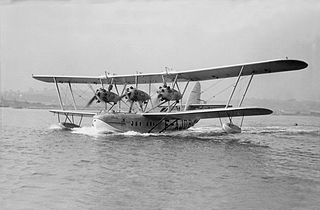
The Short Calcutta or S.8 was a civilian biplane airliner flying boat made by Short Brothers.

The Junkers A50 Junior was a German sports plane of the 1930s.
Pobjoy Airmotors and Aircraft was a British manufacturer of small aircraft engines. The company was purchased by Short Brothers shortly before the start of World War II, production continuing until the end of the war.
Rochester Airport is an operational general aviation aerodrome located 1.5 nautical miles south of Rochester, Medway, South East England, with the River Medway 1.5 NM from the end of runway 34, 3.4 mi (5.5 km) from Chatham and its Historic Dockyard and the Medway area.

The Short S.26 G-class was a large transport flying boat designed and produced by the British aircraft manufacturer Short Brothers. It was designed to achieve a non-stop transatlantic capability, increasing the viability of long distant services/duties.
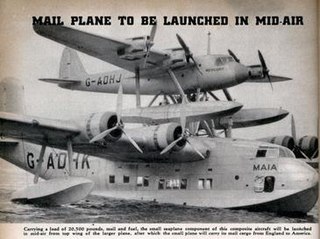
The Short Mayo Composite was a piggy-back long-range seaplane/flying boat combination produced by Short Brothers to provide a reliable long-range air transport service to North America and, potentially, to other distant places in the British Empire and the Commonwealth.
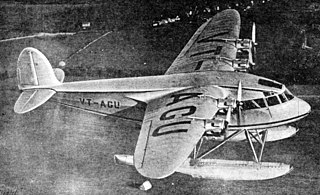
The Short S.22 Scion Senior was a 1930s British four-engined nine-passenger floatplane built by Short Brothers.
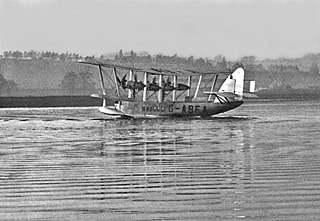
The Short S.17 Kent was a British four-engined 15-seat biplane luxury flying boat airliner, designed and built by Shorts to meet a requirement from Imperial Airways for an aircraft with greater range than the Short Calcutta. The new aircraft was to have sufficient range to fly the stage from Mirabella, Crete, to Alexandria in Egypt without the need for refuelling stops in Italian colonial territory due to a political row which had led the Italian Government to ban British aircraft from its ports.

The General Aircraft G.A.L.38 Fleet Shadower was a British long-range patrol aircraft design of the immediate pre-Second World War period. The Fleet Shadower was a highly specialized aircraft intended to follow enemy naval task forces over long times and radio back position information. However, the concept produced an ungainly and ultimately unsuccessful type. The Airspeed Fleet Shadower, built to the same requirement, also did not progress past the prototype stage.
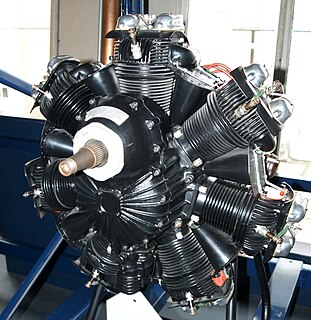
The Pobjoy Niagara is a British seven-cylinder, air-cooled, radial, aero-engine first produced in 1934. The design ran at higher speeds than conventional engines, and used reduction gearing to lower the speed of the propeller. This led to a noticeable off-centre mounting for the propeller. The Niagara was a popular engine for light and experimental aircraft, well regarded due to its small diameter, smooth operation, low noise and innovative engineering.

The General Aircraft Monospar was a 1930s British family of touring and utility aircraft built by General Aircraft Ltd (GAL).
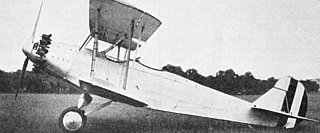
The Keystone K-55 Pronto was a mail plane developed in the United States in the late 1920s.

The Short S.11 Valetta was a 1930s British passenger monoplane designed and built by Short Brothers at Rochester.

The Short S.7 Mussel was a single-engined two-seat monoplane built by Short Brothers to test the performance of their duralumin monocoque floats. Two were built.
The Gouge flap, invented by Arthur Gouge of Short Brothers in 1936, allowed the pilot to increase both the wing area and the chord of an aircraft's wing, thereby reducing the stalling speed at a given weight. This provided the benefit of a shorter takeoff distance for a given load, a shorter distance to achieve a given height and a lower takeoff speed. This type of flap, in spite of its use on successful aircraft such as the Short Sunderland and the Short Stirling, was limited to use on aircraft produced by Short Brothers.
The Pobjoy Pirate was a three-seat, high-wing monoplane designed to compete with the de Havilland Leopard Moth using a low power but light Pobjoy radial engine. Flight tests showed the Pirate to be uncompetitive and its development was rapidly abandoned.

The Hamilton H-45 and H-47 were six-passenger-seat, all-metal, high-wing monoplanes powered by single Pratt & Whitney radial engines. They were built for passenger and mail-carrying work in the US in the late 1920s.

The Gwinn Aircar was a single-engined biplane with a cabin for two, designed in the US as a safe and simple private aircraft. Lacking a rudder, it had several unusual control features as well as an early tricycle undercarriage. Development was abandoned after a crash in 1938.

















